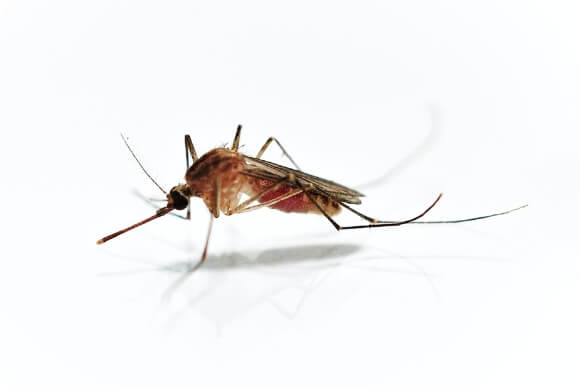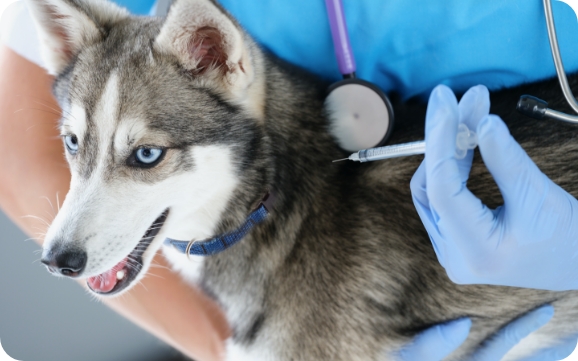

How Do Dogs Get Heartworms?
Dogs get heartworms through the bite of an infected mosquito. Because heartworms require 2 host animals to complete their life cycle, the mosquito acts as the intermediate host. It first bites an infected animal and ingests the microfilariae, which develop into infective larvae in the mosquito. Then, the infected mosquito feeds on your dog and transfers infective larvae to them, resulting in a heartworm infection.
Unlike cats, dogs are a natural host for heartworms, which means a heartworm can complete its entire life cycle within them. As a result, your dog could harbor a large number of heartworms and microfilariae at a time.

Signs of Heartworms in Dogs
In the early stages of heartworm infection, your dog may not show any symptoms. That’s one reason vets recommend heartworm tests during your dog’s annual visits.
Symptoms often do not occur until the disease has progressed in dogs.
These symptoms include:
- Mild persistent cough
- Lethargy
- Exercise intolerance
- Weight loss
- Swollen (fluid-filled) belly
- Difficulty breathing
- Caval syndrome is a severe form of heartworm disease. Signs include labored breathing, pale gums, and dark, bloody urine

How Heartworms Are Diagnosed in Dogs
The most common method of testing for heartworms is antigen-based testing. Antigen tests detect a substance produced primarily by female heartworms. If the test is positive, it means your dog could be infected. Once a diagnosis is confirmed, your veterinarian will then test your dog to determine the severity of the infection.
These tests include:
- Chest radiograph
- EKG
- Blood pressure
- Cardiac enzyme evaluation
- Echocardiogram
- Blood work
- Urine testing
Exercise Restrictions
Physical exercise can increase the rate at which heartworms cause further damage in a dog’s heart and lungs.
Disease Stabilization
Your dog’s condition may need to be stabilized with appropriate therapy.
Treatment Administration
Once your dog is stable, your vet may recommend a treatment plan that could involve several steps. In a severe, complicated form of heartworm disease (caval syndrome), the heartworms will need to be surgically removed.
All dogs are at risk for heartworm disease. If your dog isn’t already on a heartworm preventive, ask your vet about starting. For puppies, prevention should begin at 6 to 8 weeks.1 Older dogs should first be tested for heartworms before beginning heartworm preventive. Regardless of age, all dogs should get an annual blood test for heartworm disease.

Heartworms
Heartworm disease is a complex illness that can be deadly for your new pet. In this video, you can learn about common misconceptions surrounding heartworm disease, and the importance of prevention.
Reference
- 1. Heartworm Basics. American Heartworm Society. https://www.heartwormsociety.org/heartworms-in-dogs. Accessed August 19, 2022.
Related Articles


Yes. Heartworm disease is a serious—and potentially fatal—disease in dogs, and all dogs should be tested annually for heartworm infection...


Regular vet visits are essential to keep your dog healthy. But just how often do you need to go?...


Congratulations on your new puppy! Understandably, adding a new dog to your home is accompanied with some questions...







